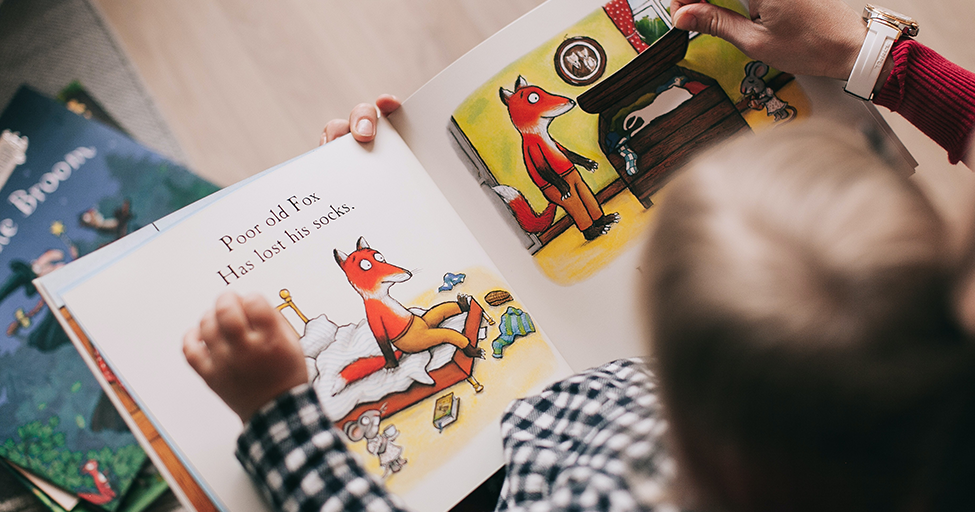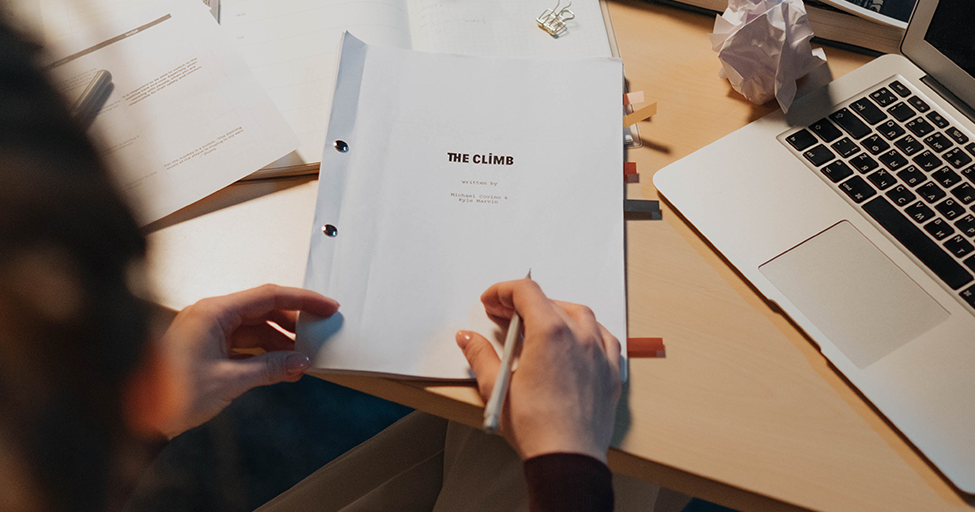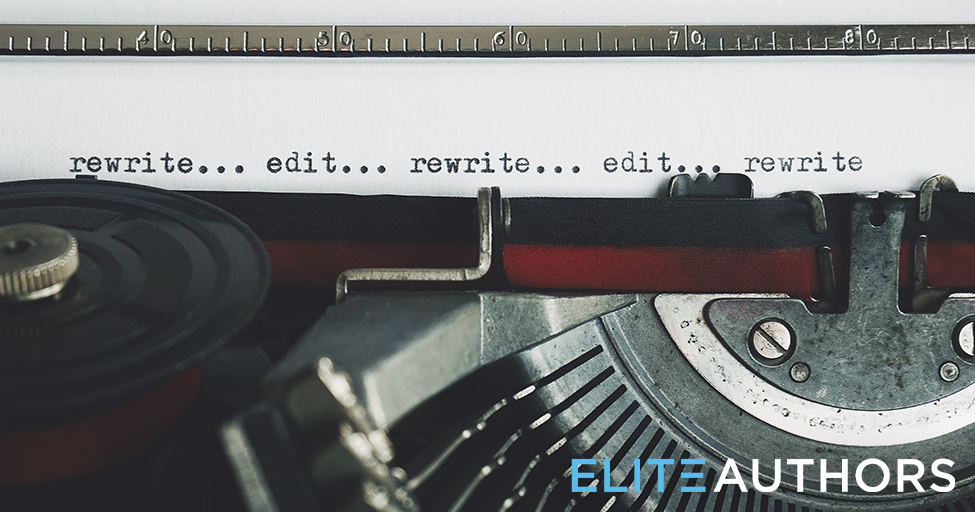
Guide to Children’s Book Design
May 18, 2022
How to Hire a Book Editor
June 16, 2022How Long Does Editing a Book Take?
You’ve finished your manuscript and are excited to begin the publishing process. After lots of hard work on your masterpiece, you can’t wait to show it off to readers around the world! Before you send your book to be published, you have to go through the editing process.
How long does editing a book take? Well, it depends on a variety of factors—and what types of editing your book needs.
Types of editing available for a book
Partnering with a professional editor is a big step in preparing your manuscript for publishing. And editing takes a full team! There are several types of editors involved in turning each manuscript into a book. This can take some time, and it’s helpful to familiarize yourself with the process so you know what to expect.
How many types of book editors are there?
All books need to go through several phases of editing before they’re ready to be published. There are four main types of book editors:
- Developmental editor. In this editing phase, the editor reviews the story line, identifies plot holes, and suggests ways to fix them.
- Line editor. With line editing, the editor reads your manuscript line by line and offers suggestions to help the text read smoothly.
- Copy editor. Here, the editor makes sure that the grammar and punctuation are all accurate. The copyediting phase also identifies any factual inconsistencies that aren’t caught during the developmental edit.
- Proofreader. As the last round of editing, proofreading will fix any spelling mistakes or formatting issues.
Although finding an editor for each phase might sound like a daunting task, it’s easier than you might think.
If you’re working with a traditional publishing house, chances are they have a full staff of editors to make sure your manuscript is ready to publish. If you’re self-publishing, the company you work with might have a list of editors that they recommend. You can also jump online and look for a freelance editor who specializes in your genre.
What is the difference between a copy editor and a proofreader?
Because copy editing and proofreading both happen toward the end of the overall editing process, it’s easy to confuse them.
Your copy editor gives your book one more pass to ensure that the developmental editing and the line editing stages caught any errors or inconsistencies. They’ll adjust confusing or ambiguous sentences or paragraphs to make your work easy to read.
Once the copyedit is done, your manuscript can be typeset and formatted so that you have a “proof”—or a sample—of your final book. The proofreader then carefully inspects the typeset manuscript. They look for things like spelling errors, punctuation issues, and improper formatting.
After the proofread is complete, you can move on to publishing and printing!
When is each type of book editing most appropriate?
Regardless of whether you’re self-publishing or working with a publishing house, your manuscript needs to be edited before it’s published. In most cases, the editing process goes from general to specific. It begins with the developmental edit to ensure that your story flows well and that your characters are, well, developed.
Next comes line editing, which basically helps smooth out the language. Then it’s copyedit time, followed by proofreading. And then you’re ready to publish!
Some manuscripts require more editing than others. For instance, if you’ve written a children’s picture book with more images than text, you might be able to forego the developmental edit. However, if you’ve written a fiction novel or a nonfiction book with a complex story line and characters, you’ll likely need all four phases of the editing process. Those are just a couple of the things you need to know about the book editing process.
What you need to know about the book editing process
Now that you’re familiar with the different types of editing, you can learn about the rest of the book editing process. The process involves several different people who all strive for the same goal: preparing your book for readers everywhere.
Who is involved in the book editing process?
As the author, you are a key player in the editing process. You determine when you’ve finished writing your manuscript and when you’re ready for the initial edit. Each editor is, of course, also important. And there are a few other parties that need to be involved too!
One of these is your publisher. If a publishing house is handling the edits for you, you probably don’t have much work to do unless one of the editors requests some revisions. However, self-publishing companies might not have editors standing by to help you. In that case, you’ll need to find your own editor to prepare your book for your readers.
Additionally, you should find a beta reader to read your manuscript before you publish. A beta reader might be a friend or family member. Just find a bookworm who will read your manuscript through the lens of a normal reader. Because the story will be completely new to them, they can provide a fresh perspective on how other readers will like your book.
What are the goals of the book editing process?
The main goal of the editing process is to prepare your manuscript for the public. Each editor in the process is tasked with finding any possible mistake in your book and suggesting corrections. You’ve been immersed in your story, so you need a few sets of fresh eyes to find the continuity gaps or typos.
Another goal is to improve your book. Professional editors know the publishing industry inside and out—and they know what many readers want in their books. So don’t just think of hiring an editor as paying someone to find problems with your manuscript. Think of it as an opportunity to fine-tune your work so that readers won’t be able to put it down until they’ve read every word!
What else should you know about the book editing process?
There are a few other things you should know about the book editing process. One is the cost. The price may vary depending on whether you partner with an editing company or hire a freelancer. Overall, you can expect an editor to cost anywhere from thirty to sixty dollars per hour. However, some editors charge by word or by project instead of billing an hourly rate, so just be sure to ask each potential editor about their pricing structure.
A second thing to keep in mind is the timeline. Longer, more complex books take longer to edit than short ones. However, there are additional factors that affect the time it takes to edit a book.
Factors that affect the time it takes to edit a book
By the time you start the editing process, you’re probably very excited to publish your book. So you want the process to go as quickly as possible. Although there are a few factors that can slow down the editing process, there are things you can do—such as self-editing—to speed things back up!
How long does a developmental edit take?
Developmental editing is the most labor-intensive round of editing, so it will take the longest. The developmental editor will carefully read your book, taking meticulous notes on each page. They’ll check any historical or geographical facts for both fiction and nonfiction books.
In general, the developmental edit for an average-length book should take about one month. However, there are things that can slow down the process.
Which factors slow down the book editing process?
It might sound obvious, but your manuscript’s length and complexity are two of the biggest factors that can slow down the book editing process. A long novel obviously takes more time to read than a short one. And because there’s a greater chance for typos and grammar errors in a longer manuscript, the editors will need to spend more time on a long work.
Nonfiction books also tend to take longer to edit than a fiction novel. Your developmental editor needs to research and verify all facts you include. Conversely, as fiction novels take more creative liberty and don’t always need fact-checking, they tend to get through the editing process more quickly than a nonfiction work.
Finally, the way you publish your book might add some time to the editing process. During the copyediting phase, your manuscript will begin to be formatted and take the shape of a book. If you’re creating both a print book and an e-book, your manuscript will have to be formatted for both print and digital publishing.
Self-editing your book can speed up the editing process. If you’re able to catch and correct a mistake or two, you’re already taking time and work off your editors’ plates.
Why is it important to self-edit a book before hiring an editor?
The more work there is to do, the longer a book edit will take. If you perform a self-edit—or ask a beta reader to help before you hire a professional editor—you can really speed up the process. And since the normal book editor salary is directly tied to how much time they spend editing a manuscript, self-editing can even save you money!
How much editing is enough?
Simply put, every book needs a lot of editing. Think about it: You’ve been living and breathing your manuscript since you started writing it. From the developmental edit all the way through the final proofreading, you need help preparing your story for your readers.
So how much editing is enough? And how do you know when your book is ready for publishing? There are a few factors to help you answer those questions.
What factors indicate how much editing a book really needs?
You already know that your manuscript’s length and complexity will largely determine how much editing your book needs, and how long it’ll take. You might not be aware that your experience as a publishing author is also a factor!
If you’ve been through the editing and publishing process before, you’ve probably honed your skills in performing a self-edit and finding a beta reader to fix some errors before you even send your manuscript to a professional editor. If you’re self-publishing your first book, you might not be as familiar with how things should work. And that’s ok! Just be patient and trust the editing process.
How can you determine when a book is ready for publishing?
Once your book has gone through the editing and proofreading process, you should give it one last look. This is your labor of love, and you want to make sure you’re thrilled with the final product! Make sure the formatting is exactly how you want it and that any illustrations match the content on each page.
It can’t hurt to have a beta reader review your book one final time as well. They can advise you on any last changes before you publish. And if they give their stamp of approval, you know you’re ready to publish!
When do you know a book has been edited too much?
You’ll get helpful advice during each round of editing. However, it is possible for a book to be edited too much. If your manuscript no longer sounds like your tone of voice or writing style, your personal touch might have been edited out of it.
Editing is a crucial step in the book publishing process. And as the writer, you deserve to be happy with the end result. So make sure your talent shines through after the writing process.
Let Elite experts provide all the editing your book needs.
Elite Authors wants to help you finish and publish your masterpiece. Whether you need everything from a developmental edit to a proofread or just want a hand with one phase, we’re here to help.
Visit our website to learn more about our editing services!



